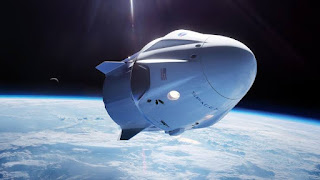A manned test flight has already been successful
Previously, the Crew Dragon space shuttle had to complete extensive tests and test flights. The decisive maiden flight took place half a year ago. Under close observation by NASA, the SpaceX transport capsule successfully brought two astronauts to the ISS. The NASA experts then gave the green light for regular operation. The transport flight that has now been carried out was therefore the first to take place under the sole direction of a private company. But why does NASA rely on the help of private companies at all? As is so often the case, the need to save money is responsible for this. The US government was simply too expensive to operate its own fleet. The private companies, on the other hand, have the advantage that they can also use the developed space shuttles for other commercial purposes. In the best case scenario, NASA will at some point be just one customer among many.
Boeing is still clearly behind schedule
The competition between the two private companies Boeing and SpaceX should also ensure that NASA does not become dependent and has to pay excessive prices. However, this approach only works if both companies develop a functioning space shuttle. However, Boeing is still clearly behind schedule with the Starliner space capsule. Observers assume that the current test phase cannot be completed until next year at the earliest. For Elon Musk, the successful first regular flight to the ISS should be particularly gratifying. Because the multi-entrepreneur is repeatedly accused of working with overly optimistic schedules. This is not to be assigned entirely by hand. At least in the case of the space shuttle, Musk and SpaceX delivered significantly faster than the top dog Boeing





Informative article
ReplyDeletethank you
DeleteNice and good article , please also visit my blog
ReplyDelete7 Income Ideas
Android Smartphone Friendly Price
Thank's for sharing.